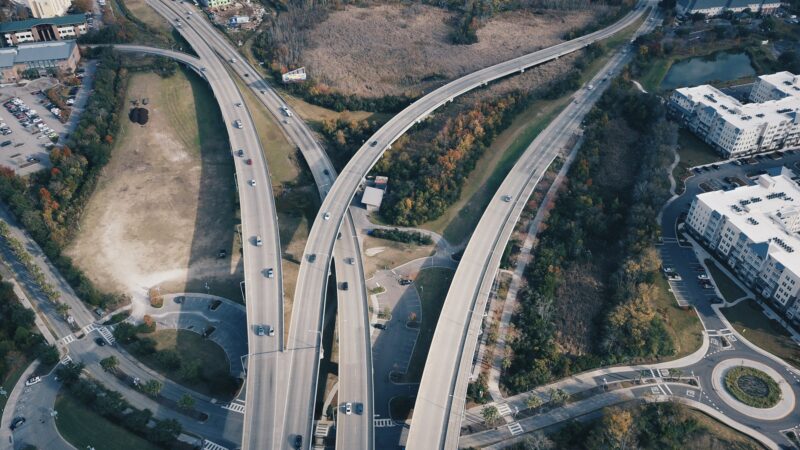What are Blockchain Bridges, and Why Do We Need Them?

When trying to understand blockchain technology and DeFi, the financial and technical jargon can get overwhelming. However, if we break things down into smaller pieces, it starts to get easier. With this in mind, let’s break down the concept of blockchain bridges and understand it in simpler terms.
In this article, we’ll try to understand what blockchain bridges are, their need, and finally, different types of bridges.
What are Blockchain Bridges?
First of all, let’s start with the definition. A blockchain bridge connects two or more blockchain networks, allowing you to move your assets from one blockchain to another. For example, using a blockchain bridge, you can move a token USDC from Ethereum to the Terra blockchain and vice versa.
Now, let’s try to understand the concept of bridges through a real-life analogy. Let’s compare a blockchain network to a highway with its own set of rules such as left or right-hand drive, traffic rules, speed-limit, etc. In the real world, if you want to hop off one highway and take your car to another one, you would use a bridge, right?
Well, that’s exactly how blockchain bridges work – they let you switch your tokens from one blockchain network to another. In the above analogy, the highway is a metaphor for a blockchain network, and your car is a metaphor for a token.
Now, the question arises – why do we need blockchain bridges in the first place? Why is there a need to move your tokens from one blockchain to another? Let’s find out.
The Need for Blockchain Bridges
The need for blockchain bridges arises from the limitations of each blockchain network. For example, one of the biggest blockchain networks, Ethereum, suffers from scalability issues, leading to high transaction fees. These issues limit the network for micro-transactions.
Another big problem with most blockchain networks is the inability to work in tandem with each other, resulting in the siloed nature of each blockchain, limiting users to only one set of rules.
The blockchain bridges allow users to move assets from one blockchain to another while also opening the door to a myriad of benefits for users to get the best yield and make the most out of the market that may exist on another blockchain network.
For example, Anchor Protocol, available only on the Terra blockchain, currently offers the highest yield on stablecoins, incentivizing users to transfer their stablecoins from other blockchains to the Terra blockchain to get the best yield.
Similarly, high transaction fees and congestion on the Ethereum network raise the need for blockchain bridges, encouraging users to move their assets to a Layer-2 blockchain network such as Optimism or Polygon.
Now, let’s get to the different types of blockchain bridges.
Types of Blockchain Bridges
There are three main types of blockchain bridges:
1. Token-specific bridge
A token-specific bridge, also known as a unidirectional bridge, allows you to move assets only in one direction from the source blockchain to the target blockchain network. For example, the WBTC network allows you to send bitcoin to the Ethereum blockchain network.
Basically, it converts the native Bitcoin to a wrapped Bitcoin; an ERC-20 token backed 1:1 with Bitcoin. It’s worth noting that using this bridge, you can only send Bitcoin to other blockchains, but it doesn’t let you send any other token.
2. Chain-specific bridge
A chain-specific bridge allows you to port assets from or to a specific chain. For example, Polygon Bridge allows you to move assets from the Ethereum blockchain to the Polygon blockchain and vice versa. Similarly, Terra Bridge allows you to move funds from Terra blockchain to any other blockchain network and vice versa.
It’s worth noting here that chain-specific bridges are usually built by the specific blockchain to facilitate cross-chain asset movement from any other blockchain to the given blockchain. For example, Terra Bridge allows you to move funds from Harmony or Ethereum to Terra and vice versa, but it doesn’t allow you to move funds when neither source nor target blockchain is the Terra blockchain.
3. Multi-chain multi-token bridge
A multi-chain bridge with multi-token support allows you to move a range of tokens from one blockchain to another. These bridges can be said to be token and network agnostic serving the needs of everyone.
Some of the biggest and most well-known network agnostic bridges are Wormhole, MultiChain, Allbridge, and ChainPort. Even though these bridges look similar, they differ in their mechanisms, number of tokens, the blockchain networks they support, security model (Custodian or non-custodian), and other parameters.
Conclusion
If you’ve reached the conclusion, congratulations. I hope you got a basic understanding of blockchain bridges, the need for them, and the different types of bridges. If you would like to learn more, I suggest you head to any bridge app, connect your web3 wallet and experience it firsthand.












